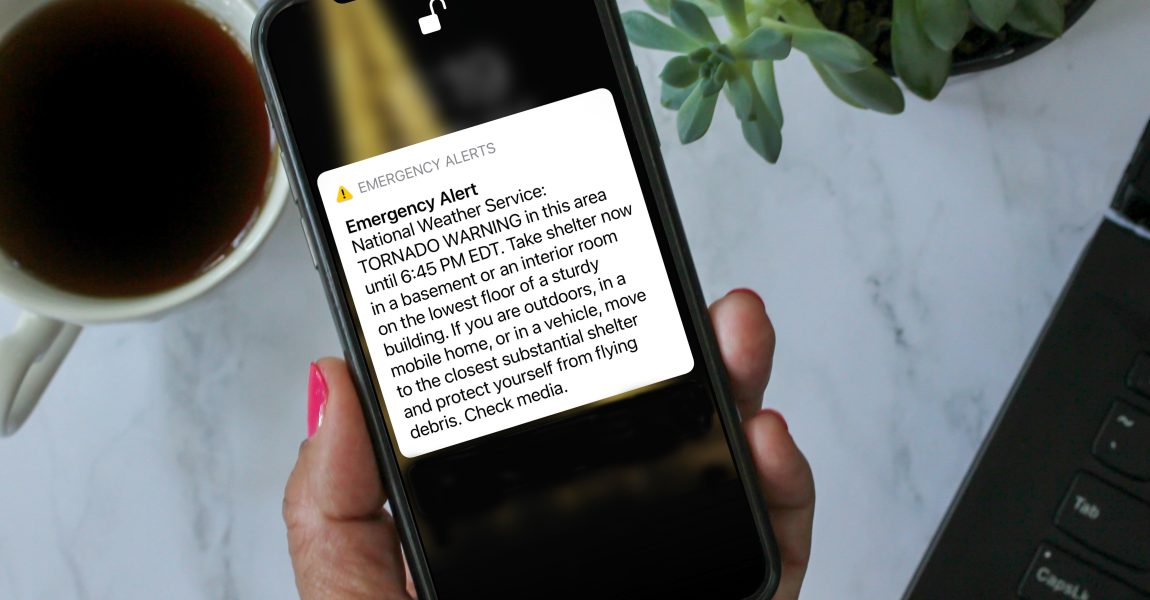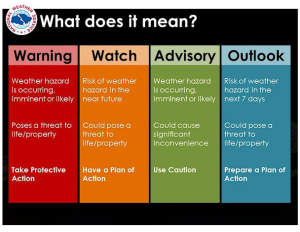
We all receive weather alerts, whether it be broadcasted on television, on the radio via public safety announcement, or on weather apps. So, what is the difference between a weather warning, watch, advisory, and outlook, and why is it important to know the difference? In this blog, we will explain the difference and severity level of each of these weather classifications.
A weather warning means weather conditions pose an immediate threat to life or property at a known time or date. When a weather warning is used, it means people in the path of severe weather need to take protective action immediately. An example of this would be a weather warning for a severe thunderstorm that causes flooding, hail, and possible tornadoes. A weather warning is the highest level of weather alert and should be taken seriously.
A weather watch means there is a great risk of hazardous weather, but the exact timing and location of the severe weather is unknown. A weather watch is just what it sounds like; there is expected hazardous weather but has an unknown arrival time and date, so it is recommended to watch the weather and be prepared. A weather watch is the second highest level of weather alert and is used to advise the public to have a plan of action to stay safe.
A weather advisory means hazardous weather is likely to occur soon and can cause significant inconvenience. Weather advisories are issued for less serious weather conditions but still serve as an alert that weather could pose an inconvenience. An example of a weather advisory would be for dense fog. It serves to inform the public that fog is expected and could reduce visibility over an area for an extended period of time. This type of weather alert is issued to advise the public to use caution in the coming weather events.
A weather outlook means there is a possibility of hazardous weather in the next coming week. This type of weather alert is intended to bring awareness to the potential of hazardous weather and to inform the public about the possibility of an upcoming severe weather. A weather outlook is the lowest level of weather alert.

Knowing the difference between these types of weather alerts can help keep you safe in unknown weather. A weather warning means hazardous weather is occurring now. A weather watch means the risk of hazardous weather could happen soon. A weather advisory means hazardous weather is likely to occur. A weather outlook means hazardous weather is possible in the near future. When it comes to the threat of severe weather, have an action plan in place, monitor local news channels, and always stay weather aware.